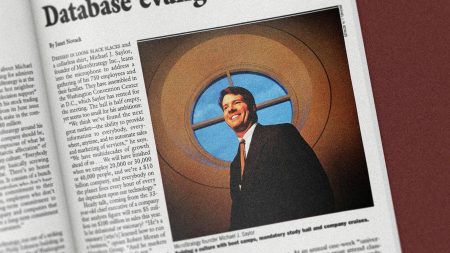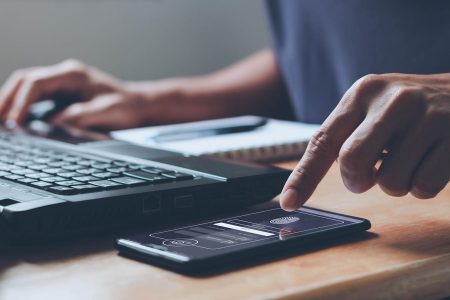Millions of student loan borrowers face an uncertain future as a second Trump administration prepares to return to Washington. But borrowers can start taking steps now to prepare for anticipated changes to student loan forgiveness and repayment.
The fate of several Biden administration-era student debt relief initiatives, such as the new SAVE plan and broad loan cancellation, may be sealed. But the future of other programs, including some popular loan forgiveness programs, is murkier.
Student loan borrowers don’t have direct control over court rulings, legislative priorities or policy directives. That doesn’t mean, however, that nothing can be done to gear up for further turmoil in the student loan space. Here are some steps to take before 2025.
Evaluate Your Student Loan Forgiveness Options Now
It’s unlikely that all opportunities for student loan forgiveness will simply instantly disappear in January. Certain initiatives, such as President Joe Biden’s “Plan B” debt relief program and hardship-based student loan forgiveness, will likely get nixed by the Trump administration if they are not overturned first through court challenges.
But other programs, such as Public Service Loan Forgiveness (or PSLF) and the Total and Permanent Disability discharge program, are rooted in statute. That means they can only be fundamentally changed or repealed through an act of Congress. Republicans are set to control both the House and the Senate, but with relatively small majorities. And, at least for now, the Senate filibuster remains intact, which would require Democratic cooperation on at least some legislation. Full repeal of all existing loan forgiveness programs is not a foregone conclusion, and even if a repeal does happen, current borrowers could be grandfathered in.
But given the very real possibility of funding cuts, a potential reduction in borrower-focused communication, and a rollback of oversight over loan servicers and other federal contractors, borrowers may be much more on their own in figuring out their options and potential eligibility for student loan forgiveness and reduced payment programs.
Take the time now to familiarize yourself with your options. You may not be able to rely on the Education Department or loan servicers to provide complete or accurate information in the coming months.
Borrowers Seeking Loan Forgiveness Through PSLF Should Take Action Now
Borrowers on track for PSLF, which can provide complete federal student loan forgiveness in as little as 10 years for those who work in nonprofit or government-sector careers, can take some steps now to shore up their position. PSLF is statutory, and while the incoming Trump administration could make some changes, wholesale repeal of the program is not possible without Congress.
Here are some steps PSLF borrowers can take to stay on top of their student loan forgiveness trajectory:
- Review your PSLF Tracking information, now housed at StudentAid.gov, and make sure that your PSLF payment count appears to be accurate. If you think there’s been a mistake, consider filing a dispute through the PSLF Reconsideration portal.
- If it’s been awhile since you last certified your employment, submit a new PSLF Employment Certification through the PSLF Help Tool. This process is now entirely digital, and your form should be processed within a few weeks. This will ensure that your PSLF qualifying payment count is up-to-date.
- If you’re stuck in the SAVE plan forbearance but nearing the end of the 120 payments required to receive loan forgiveness, consider looking into PSLF Buyback, which can provide an opportunity to cross the loan forgiveness finish line while in the non-qualifying forbearance period.
Student Loan Borrowers Should Get Ready For The SAVE Plan To End
The SAVE plan, an income-driven repayment plan created by the Biden administration to provide borrowers with lower payments, a waiver of excess interest, and a pathway to eventual student loan forgiveness, is likely going to end one way or another. And its demise may be sooner than some people are realizing.
SAVE is currently facing legal challenges, and the 8th Circuit — which seems poised to strike down the program — is set to issue a ruling, likely within the next few months. The Biden administration was widely expected to appeal that decision to the U.S. Supreme Court.
But the Trump administration will probably not do that. While a Trump-led Education Department could embark on a regulatory process to repeal SAVE administratively, this may not be necessary at all. Assuming the 8th Circuit strikes down SAVE, the Trump administration could simply not appeal the decision, allowing the 8th Circuit’s ruling to be the law of the land.
Borrowers who are in the SAVE plan forbearance, or were expecting to pay their student loans in that plan, should start preparing now for alternatives. There are other IDR plans — most notably, the Income-Based Repayment plan, or IBR. The Education Department also just announced that it is taking steps to bring back the Pay-As-You-Earn and Income-Contingent Repayment plans as soon as December. Many borrowers will see an increase in their monthly payments under any of these plans as compared to SAVE. Take steps now to evaluate your repayment plan options and budget for what could be higher monthly payments.
New Student Loan Borrowers Should Evaluate Repayment And Loan Forgiveness Options Without The SAVE Plan
Meanwhile, many borrowers who graduated this past spring are nearing the end of their grace periods. That means repayment is expected to begin within the next couple of months.
These new borrowers should assume that the SAVE plan will not be available. Instead, borrowers should evaluate the full scope of repayment plan options, including “regular” Standard or Extended repayment plans, as well as alternative income-driven repayment plans like IBR, PAYE, and ICR. It’s important to note that for some student loan forgiveness programs like PSLF, borrowers must be enrolled in a specific type of repayment program, like an IDR plan.
Borrowers can log into their StudentAid.gov account and use the Department of Education’s “loan simulator” to see monthly payment estimates under various options.
Student Loan Borrowers Should Budget For Higher Payments Under IDR Plans In 2025
Many borrowers who have been in any IDR plan (not just the SAVE plan) are likely to see an increase in their monthly payment next year. For some individuals, the jump in the payment amount may be substantial. There are several reasons for this:
- Many borrowers have an IDR payment based on outdated income information due to multiple extensions of income recertification requirements associated with the Covid-19 forbearance. If your income has increased since your last IDR application, you could be looking at a big jump in your monthly payments next year.
- Similarly, borrowers who got married within the last few years and have been filing taxes jointly with their spouse could also see a big increase in monthly IDR payments due the inclusion of spousal income. These borrowers may want to explore filing taxes separately next year, in consultation with a tax advisor, and evaluate whether any additional tax liability may offset a lower student loan payment.
- Borrowers who were enrolled in the SAVE plan may need to transition to a different IDR plan if SAVE gets struck down, all of which can be more expensive than SAVE.
Borrowers can evaluate anticipated monthly payments by using the department’s Loan Simulator tool available via their StudentAid.gov account.
Get Your Student Loans Out Of Default Before 2025
Hundreds of thousands of borrowers remain in default on their federal student loans. The Covid-19 forbearance period, which lasted from March 2020 until September 2023, paused collections activity against defaulted federal student loan borrowers. Then, the Biden administration extended these benefits for another year through the Fresh Start program to give people an opportunity to get out of default and back into good standing.
But Fresh Start is now over. And borrowers who remain in default on their federal student loans will be subject to collections activity again starting in 2025. The government has powerful tools to pursue defaulted federal student loan borrowers without needing to go to court. These include the ability to garnish wages administratively, intercept federal tax refunds, and offset federal benefits, including Social Security.
Borrowers may have options to get out of default, even though Fresh Start has ended. These options can include Direct loan consolidation, rehabilitation, and in some cases, administrative discharge or loan forgiveness if the borrower qualifies. But the time to start exploring these options is now — not after collections activity starts back up again next year. And getting out of default may be necessary to qualify for certain student loan forgiveness programs, like PSLF.
Brace For Student Loan Servicing Issues Impacting Forgiveness And Repayment
Student loan servicing is a mess. The federal Consumer Financial Protection Bureau (which oversees the financial services sector) and the Department of Education’s FSA Ombudsman (which handles disputes between borrowers and federal student loan servicers) released reports this month highlighting widespread, ongoing student loan servicing problems including rampant misinformation, erroneous billing, and an inability for borrowers to reach someone online or over the phone to discuss important issues.
While anything is possible, there’s little reason to believe that these conditions will improve in the coming months and years. During the first Trump administration, Education Department officials adopted a more servicer-friendly approach — for example, officials tried to limit borrowers’ ability to hold loan servicers accountable in court through legal challenges. The first Trump administration also installed more industry-friendly officials at the CFPB, stalling its oversight and accountability efforts in the student loan servicing space.
Thus, borrowers should get in the habit now of taking steps to try to minimize the harm that problematic loan servicing can cause, at least to the extent possible. These steps can include periodically downloading and retaining key student loan-related correspondence and records; keeping abreast of key program developments so borrowers don’t have to rely on their loan servicer for critical information; and logging into your account monthly, even if you’re on autopay, to ensure that everything is in order.
Borrowers also may want to familiarize themselves with state-level assistance options, such as their state attorney general’s office or student loan ombudsman (which some states have set up within the last few years). These entities can potentially assist with disputes over student loan forgiveness and repayment programs if the normal federal dispute bodies, such as the CFPB or FSA Ombudsman, are no longer effective.
Read the full article here










